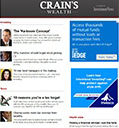
The Federal Reserve dropped an assurance it will be “patient” in raising interest rates, ending an era in its communications policy and opening the door for higher borrowing costs as early as June.
“An increase in the target range for the federal funds rate remains unlikely at the April” meeting, the Federal Open Market Committee said in a statement Wednesday in Washington. Fed officials also lowered their median estimate for the federal funds rate at the end of 2015 to 0.625%, compared with 1.125% in December forecasts.
The FOMC said it will be appropriate to tighten “when it has seen further improvement in the labor market and is reasonably confident that inflation will move back to its 2% objective over the medium term.”
Advertisement
Chair Janet Yellen is preparing for an exit from the most aggressive easing in the Fed's 100-year history as the job market overcomes the damage wrought by the deepest recession since the 1930s. At the same time, inflation and wage growth that remain too low are giving her reasons for caution.
Stocks rose, erasing earlier losses, after the FOMC announcement. The S&Ps; 500 Index was up 0.6% at 2,087.04 as of 2:11 p.m. in New York. Ten-year Treasury notes yielded 1.99%, down 6 basis points.
While Fed officials lowered their estimate for the federal funds rate at the end of 2015, they said in their statement that “this change in the forward guidance does not indicate that the Committee has decided on the timing of the initial increase in the target range.”
Dropping the pledge to be “patient” marks a shift away from the explicit guidance on the future path of policy that the Fed has used since late 2008 to keep longer-term borrowing costs low. The Fed will now set policy at each meeting based on the latest economic data, making its actions less predictable.
The Fed repeated that it sees “strong job gains” and that labor-market conditions have “improved further.”
Still, the committee lowered its assessment of the economy, saying growth has “moderated somewhat.” In January, it said the economy was “expanding at a solid pace.” Export growth has weakened and the housing recovery remains slow, according to this month's statement.
TWO MEETINGS
Ms. Yellen has said the promise to be “patient” means the FOMC would probably wait at least two meetings before raising rates. The next FOMC meetings are scheduled for April and June.
The Fed is preparing to tighten even as stagnant growth elsewhere prompts central banks in Europe, China and Japan to ease policy. That has put upward pressure on the dollar, which has jumped more than 4% since Fed policy makers last met on Jan. 28, posing a potential headwind to growth as American exports become more expensive.
Fed officials confront conflicting signals from their dual mandates for full employment and price stability as they weigh when to tighten policy for the first time since June 2006.
JOB GAINS
Surging job gains pushed unemployment down to 5.5% in February, the lowest level in almost seven years, suggesting the economy is strong enough to withstand higher borrowing costs.
Payroll gains have averaged more than 200,000 workers for 12 straight months, the longest streak of such increases since March 1995.
“No matter how you cut the cake, you still have an economy running above trend,” said Bricklin Dwyer, an economist at BNP Paribas SA in New York. Absent a threat of deflation, “the economy can handle higher rates.”
The economy grew at a 2.2% annualized rate in the three months ended December after a 5% jump in the third quarter that was the biggest in 11 years.
Even so, recent data on housing, industrial production and consumer spending have been weaker than forecast, prompting some economists to mark down their estimates for growth this quarter.
Inflation and wage growth also haven't been as strong as many Fed officials would like, suggesting that there's more slack left in the economy than low unemployment alone suggest.
Prices as measured by the Fed's preferred gauge rose just 0.2% in January from a year earlier, and inflation has languished below the central bank's 2% goal for 33 straight months.
Ms. Yellen last month said it would be appropriate to raise rates if the labor market continues to improve and officials are “reasonably confident” that inflation will move back up toward their goal.
Low inflation expectations are depressing 10-year Treasury yields, which hit a 20-month low of 1.64% in January. The yield was at 2.05% late Tuesday.
One reason for declining inflation: the plunge in oil prices. That gives Fed officials reason to believe consumer prices will recover as the impact of cheaper oil dissipates.
Bond investors aren't buying that argument. Traders are betting prices will rise at a 1.37% annual rate over the next five years, down from a 1.67% estimate on March 3, according to break-even rates on Treasury Inflation Protected Securities.
Wages present more of a puzzle. Average hourly earnings rose 2% in February from a year earlier, matching the average since the end of the recession in June 2009.
Eighty nine-percent of 49 economists surveyed by Bloomberg this month forecast that the Fed would drop “patient” from its statement. Sixty-nine percent predicted the phrase would be replaced by some other form of guidance.
In December, the FOMC dropped a clause from its statement that it would hold rates low for a “considerable time” and instead said it would be “patient” in weighing an increase








